News & Updates
Short posts and information that are worth sharing but don’t quite fit a full article.
What happens when a Tamiya Mini 4WD with Atomic Tuned 2 PRO going over a Junior Circuit Slope Jump?
What happens when you have a Tamiya Mini 4WD with an Atomic Tuned 2 PRO motor going over a Tamiya Japan Cup Junior Circuit Slope Jump section at an average speed of ~4.81m/s with no brakes?
Here is what our jump simulator shows at 0.1X (slow motion). We can also see the bounce effect of the car when landing. The first bounce is higher than the height of the track wall which could lead to track out.
What do you think? Do you agree with the result?
Legend:
- a: angle (degrees)
- vx: horizontal velocity (m/s)
- vy: vertical velocity (m/s)
- s: speed (m/s)
- m: surface gradient
#mini4wd, #ミニ四駆, #迷你四驅, #tamiya, #STEM
London GP Winter Cup 2025
Hurray! Another Mini 4WD race is coming in December 2025 🙂
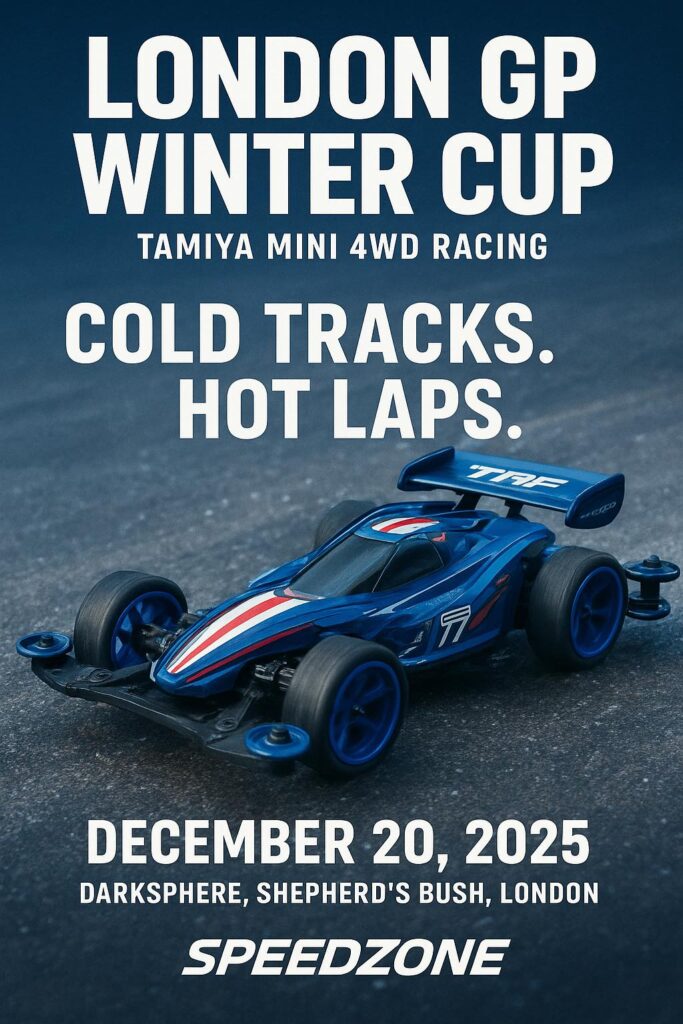
In case you missed it, SpeedZone is organising a Tamiya Mini 4WD race in London on Saturday 20th December 2025.
Event: London GP Winter Cup
Location: Darksphere, Shepherds Bush, London
If interested, please reserve your place by filling up the registration form below.
https://forms.gle/ggktb8g4dPYw8siT7
#mini4wd, #ミニ四駆, #迷你四驅, #tamiya
Ultra Autonomous Braking in action
Here is a screen recording of our A.I. Mini 4WD simulator showing a video we captured with a smartphone and playing back the data recorded by the on-board computer. The first part of the recording is showing the action in real time. Whereas the second part, we dialled down the playback speed in our simulator to 1/4 of real-time to make it easier to see the details.
On the left is the video we took with a smartphone.
In the middle is the track map with speed target markers (M means max speed, 1.5 means 1.5 m/s) and a purple circle showing the position of the car.
On the right are the gauges, from top to bottom:
- Speed gauge (in m/s)
- Power gauge (in %, B means Braking)
- Yaw (turning left/right, in degrees per second)
- Pitch (nose up/down, in degrees per second)
- Roll (in degrees per second)
The car you see is our A.I. Mini 4WD Mark 8 prototype with the newly added Ultra Autonomous Braking ability. We deliberately set the deceleration rate very low so that the car will brake too soon on the first lap. As you can see in the video, the car learnt and adjusted itself. Then it was pretty much spot on from the 3rd lap onwards regardless whether the car moves a bit quicker or slower.
(Note: This is what we see with our simulator, not a video edit.)
#mini4wd, #ミニ四駆, #迷你四驅, #tamiya, #STEM, #ミニ四駆ai
Introducing Ultra Autonomous Braking!
Whilst Son Goku has mastered Autonomous Ultra Instinct, our A.I Mini 4WD has gained a new ability too. We called it Ultra Autonomous Braking. It has always been a dream, and finally we have made this dream comes true.
Previously, the braking point was calculated (pre run) on our laptop based on input such as assumed parameters, data extracted from previous runs and our simulator etc. The braking point position is loaded to the car and the on-board computer follows the instruction consistently to brake exactly at the point prescribed. However due to the nature of Mini 4WD cars, the acceleration rate, top speed and deceleration rate can vary massively at run time compared to simulation. This can cause the car to brake too early or too late. We mitigated this issue by running the car multi-times, manually studying the data with our tools, utilising cruising and improving the braking point iteratively.
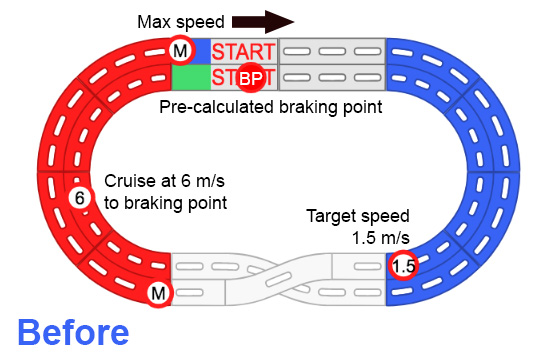
With Ultra Autonomous Braking, the braking point is calculated at run time by the car itself. This new ability enables our car to brake with extreme precision, taking run-time information, dynamically calculating the braking point and in the meantime learning/self-correcting. It can still brake precisely even when the motor had a surge of power or even when the battery starts to get weak. It is a major break through in our A.I tech.
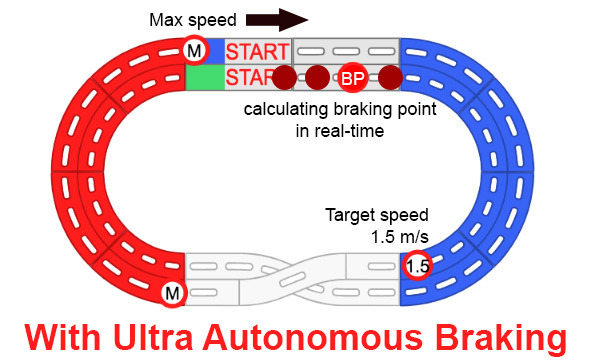
In order to make this happen, one key component we had to improve further was the positioning system. Now it has the ability to correct measurement errors from sensors.
We tested the new ability briefly in our small 2 lanes oval track and the result is amazing. We are looking forward to testing it in a larger layout.
Will share more info in the near future. So watch this space.
#mini4wd, #ミニ四駆, #迷你四驅, #tamiya, #STEM, #ミニ四駆ai
What happens when a Boxstock Tamiya Mini 4WD going over a Junior Circuit Slope Jump?
What happens when you have a Boxstock Mini 4WD going over a Tamiya Japan Cup Junior Circuit Slope Jump section at full speed (~4.3m/s) with no brakes?
Here is what our jump simulator shows at 0.1X (slow motion). We can also see the bounce effect of the car when landing.
What do you think? Do you agree with the result?
Legend:
- a: angle (degrees)
- vx: horizontal velocity (m/s)
- vy: vertical velocity (m/s)
- s: speed (m/s)
- m: surface gradient
#mini4wd, #ミニ四駆, #迷你四驅, #tamiya, #STEM
Which roller is the fastest?
Based on your feedback, we have improved the comparison chart by adding some photos of the rollers. We hope this makes it easier to read. Roller with the least friction is the fastest but certainly there are other important factors to consider too. Read the full report find out more.
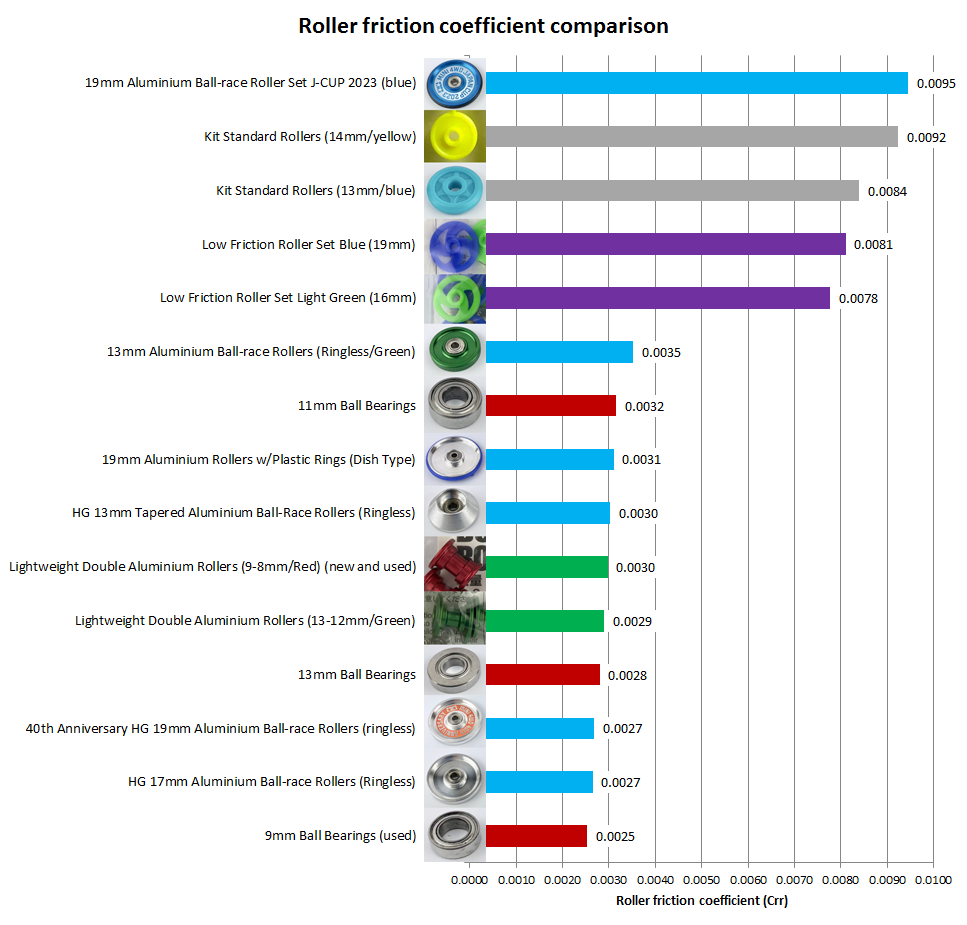
We used science to test 15 sets of Mini 4WD rollers:
- Kit Standard Roller (13mm/blue) [Item no: 95304]
- Kit Standard Roller (14mm/yellow) [Item no: 95130]
- Low Friction Roller Set Light Green (16mm) [Item no: 95391]
- Low Friction Roller Set Blue (19mm) [Item no: 95391]
- 13mm Aluminum Ball-race Roller (Ringless/Green) [Item no: 95612]
- HG 17mm Aluminum Ball-race Roller (Ringless) [Item no: 15522]
- 40th Anniversary HG 19mm Aluminum Ball-race Roller (ringless) [Item no: 95643]
- HG 13mm Tapered Aluminum Ball-Race Roller (Ringless) [Item no: 95497]
- 19mm Aluminum Rollers w/Plastic Ring (Dish Type) [Item no: 15426]
- 19mm Aluminum Ball-race Roller Set J-CUP 2023 (blue) [Item no: 95160]
- Lightweight Double Aluminum Roller (9-8mm/Red) [Item no: 95562]
- Lightweight Double Aluminum Roller (13-12mm/Green) [Item no: 95606]
- 9mm Ball Bearing [Item no: 15344]
- 11mm Ball Bearing [Item no: 15345]
- 13mm Ball Bearing [Item no: 15475]
#mini4wd, #ミニ四駆, #迷你四驅, #tamiya, #STEM
Motor magnets strength measured
Recently saw a post in a Mini 4WD group TAMIYA田宮四驅車情報站 on FB about measuring magnet strength using the “Compass” App. I am not sure how this can be done with the compass app but we did use a Magnetometer App to do some measurements before. We tested 9 motors: Stock double shaft (PRO), Rev Tuned 2 PRO, Torque Tuned 2 PRO, Atomic Tuned 2 PRO, Light Dash PRO, Hyper Dash PRO, Mach Dash PRO, Power Dash and Ultra Dash. We placed the motor around the phone sensor until we got a maximum value. The unit for magnetic strength is Tesla (T). We were measuring in micro Tesla (µT). We normalised the result with the background magnetic noise. Please note, we haven’t calibrated the app nor checked the accuracy. So the result might be off, but it should give a good indication. Here is what we found:
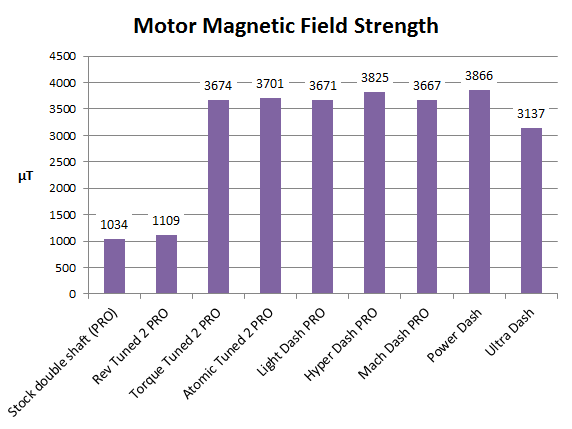
- Power Dash and Hyper Dash PRO have the strongest magnets, but only just.
- Torque Tuned, Atomic Tuned, Light Dash and Mach Dash all seems to use similar magnets.
- Rev Tuned magnets are only a little bit stronger than Stock
- The “high rev” motors e.g. Rev Tuned and Ultra Dash seem to use weaker magnets. So does it mean (high torque – strong magnet, high rev – weak magnet)?
What do you think? What do you take away from these results? Please share your comments below.
Magnetometer App
https://apps.apple.com/us/app/magnetometer/id1662997574
mini4wd, #ミニ四駆, #迷你四驅, #tamiya, #STEM
Slope Jump Section mapped
We have recently mapped the curvature of the slope on a Tamiya Junior Circuit Slope Section in order to study the effectiveness of brakes and flight trajectory. After a painstaking process of taking measurement points and cross checking, we have the result (in mm accuracy)!
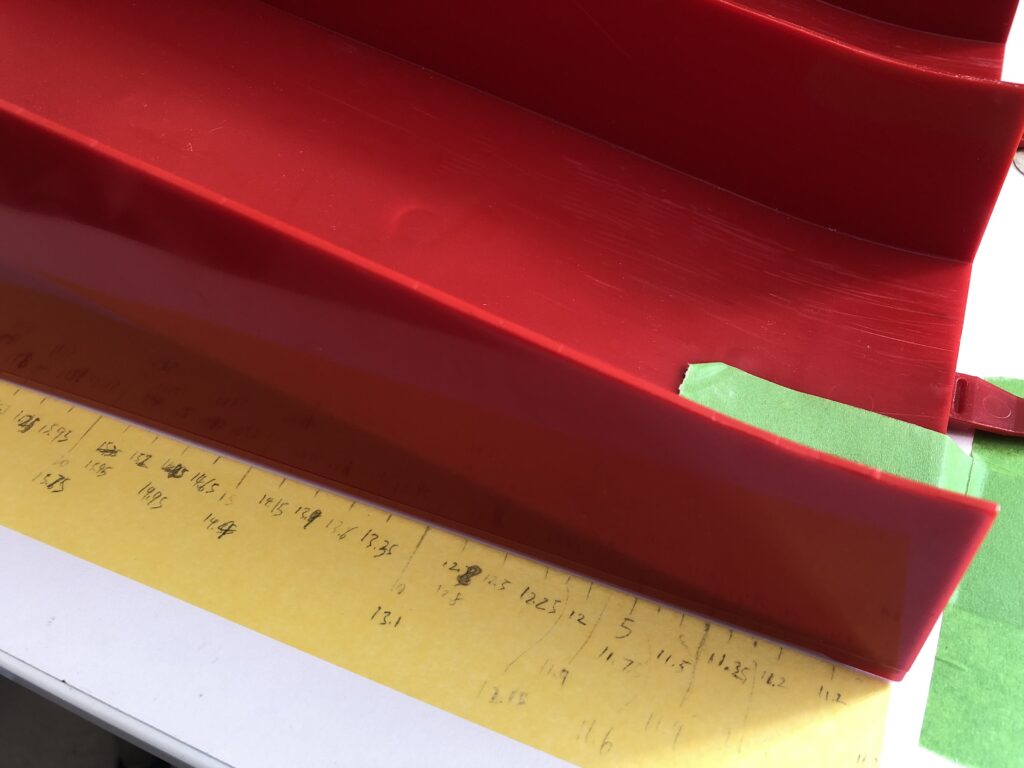

While many would assume the curvature is symmetrical, meaning the curve going up is similar to the curve flattening on the top. Many models and illustrations we found on the internet are like this. However from our measurements, we found that it is not the case, it is actually asymmetrical with a steeper up slope and a flatter plateau. The steeper up slope curvature design should help the brakes to engage sooner.

The slope section base length is 54cm (standard junior circuit length), slope height 11.85cm and slope incline angle is 15 degrees.
Here is a copy of the measurement result (in CSV)
mini4wd, #ミニ四駆, #迷你四驅, #tamiya, #STEM
